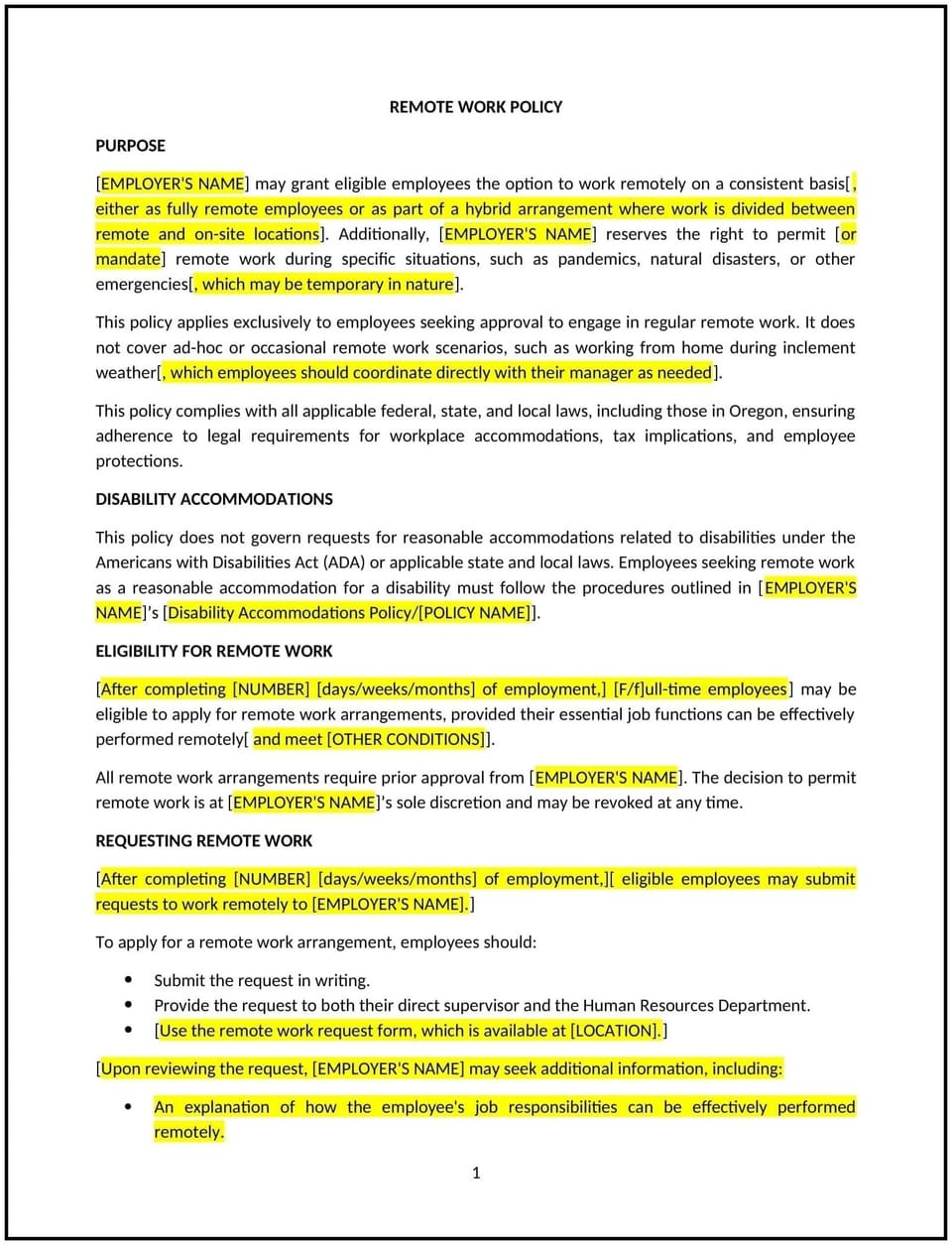Remote work policy (Oregon): Free template

Remote work policy (Oregon)
This remote work policy is designed to help Oregon businesses establish guidelines for employees working outside the traditional office environment. It outlines expectations, eligibility criteria, and procedures for remote work arrangements.
By adopting this policy, businesses can offer flexibility, attract top talent, and maintain productivity in a remote work setting.
How to use this remote work policy (Oregon)
- Define remote work: Clarify what constitutes remote work and the types of roles eligible for remote arrangements.
- Establish eligibility criteria: Specify which employees or positions qualify for remote work based on job responsibilities and performance.
- Set expectations: Outline work hours, communication protocols, and performance standards for remote employees.
- Provide equipment and support: Specify whether the business will provide necessary equipment, such as laptops or software, for remote work.
- Address data security: Establish guidelines for protecting company data and maintaining confidentiality in remote work environments.
- Review and update: Assess the policy annually to ensure it aligns with evolving business needs and employee expectations.
Benefits of using this remote work policy (Oregon)
This policy offers several advantages for Oregon businesses:
- Offers flexibility: Provides employees with the option to work remotely, improving work-life balance.
- Attracts top talent: Enhances the business’s appeal to candidates seeking flexible work arrangements.
- Maintains productivity: Ensures remote employees remain productive and engaged with clear expectations.
- Reduces overhead costs: Lowers expenses related to office space and utilities.
- Enhances employee satisfaction: Supports employee well-being and retention by offering remote work options.
Tips for using this remote work policy (Oregon)
- Communicate the policy: Share the policy with employees and include it in the employee handbook.
- Provide training: Educate managers and employees on remote work expectations and best practices.
- Monitor performance: Regularly review remote employees’ performance to ensure adherence to expectations.
- Address issues promptly: Take corrective action if remote work arrangements are not meeting business needs.
- Update regularly: Assess the policy annually to ensure it aligns with evolving business needs and employee expectations.
Q: How does this policy benefit businesses?
A: By offering flexibility and maintaining productivity, this policy helps businesses attract top talent and reduce overhead costs.
Q: Which employees are eligible for remote work?
A: Eligibility depends on job responsibilities and performance. Some roles may require in-office presence, while others are suitable for remote work.
Q: What equipment is provided for remote employees?
A: Businesses may provide laptops, software, or other necessary equipment, depending on the policy.
Q: How can businesses ensure data security in remote work environments?
A: Businesses should establish guidelines for data protection, such as using secure networks and encryption tools.
Q: How often should businesses review this policy?
A: Businesses should review the policy annually or as needed to ensure it aligns with evolving business needs and employee expectations.
This article contains general legal information and does not contain legal advice. Cobrief is not a law firm or a substitute for an attorney or law firm. The law is complex and changes often. For legal advice, please ask a lawyer.


